Strategy – which is dependent on change-oriented co-workers – is a tricky challenge. Many in leadership positions want to succeed by attempting to explain their strategy – in the hope that people can repeat it or, preferably, understand it. None of the above will achieve the desired result.
A study by Fortune Magazine revealed that 90% of all strategies fail, other sources mention about 70-80%. Despite the spread, it is a fact that the majority of strategies fail.
Instead, the success of a process should be measured by the actions and behaviors attributable solely to the strategy in question. Focus, then, must be on supporting both team and individuals to identify and execute their own strategic actions, leading to their own plan.
Meaning, that each individual co-worker needs to understand what he/she needs to do differently to make the strategy happen!
The strategy is meant to be executed by all teams and individuals.
The vision and strategy are the most important decisions in all companies, and definitely one where people want to be involved in a higher degree than just being invited to saying yes to the manager’s goal and focus presentation. A logical and practical workflow, involving and engaging the co-workers, is crucial to support the managers to be comfortable enough to let loose.
The probable outcome of a vision and/or strategy, made with the participation of the co-workers, would be a similar direction as if the management team would have done it on their own, but with a huge boost on commitment and understanding. It will be similar due to that the solid background of facts and transparency of the big picture would enlighten the whole organization of the logic, sharing the perception of the management team.
One of the greatest achievements of being involved in the decision-making process, is that the acceptance dramatically increases. An additional effect is that co-workers facing these difficult strategic questions instead of being informed about the solutions will be more respectful of the difficult job to decide appropriate steps.
Securing ownership and quality of the direction through local adaptation.
Stanford professor Robert Burgelman said, “Successful firms are characterized by maintaining bottom-up internal experimentation and selection processes while simultaneously maintaining top-driven strategic intent.” What it means is that you need a clear, top-down strategic direction. But this will only be effective if, at the same time, you enable your employees and teams to create bottom-up initiatives that fall within the boundaries set by that strategic intent.
By settling a high-class process for the local adaptation, you can secure ownership and quality of the direction and the action plans. That means that all teams in a hierarchy are supported to establish their own decision of how to contribute to the overall vision. Instead of concentrating either on one or two company focus areas or a classic cascading of metrics or bullet points, the teams will repeat the decision-making process on each level.
Even, if your company has a main overall global direction, it is likely that e.g. a region, a division, a plant or a central function have different qualifications, preconditions, environment, history, culture and challenges, which influences how they in the best way can contribute to the overall strategy. The likelihood is low that the concentration on one single focus area of development will motivate all these distinctive teams equally. Each team needs to understand the Strategic Arrow; however, it is essential that they are encouraged to find the decisions, what to focus on and which solutions to work out, themselves.
To minimize the risk of all local directions becoming fragmented or unaligned, it is of great importance that the general overall Strategy direction is built upon facts, that the overall strategy texts is clear and that there is a robust process to guide the analysis of the input to an adaptation in the teams.
Decide a locally adapted strategy – roadmap – the Arrow
A strategic roadmap cannot be made by cascading down one or two focus areas for all teams. That would inevitably lead to that some teams will be forced to work with topics which they don’t find important. As mentioned before, each team should be supported in finding their own best decision to support the overall strategy.
The direction you build together with your co-workers is your way to be proactive. It is roughly clear where to go, but much sharper in what you want to achieve in the first step. You have a clear picture how to start and your team is top motivated.
Now, it is crucial to create a forum, meetings, time, visibility, sharing, and support, in other words – utilize the infrastructure and empower. Otherwise, the daily business will, most likely, consume all our time and there will be no time and energy left over for our most important long-term questions.
Core of Development support teams to formulate their strategy in unison. This is a meticulous process that covers background, direction and current status. The resulting strategic narrative is used as input for all teams in the organization to identify and close their own gaps. Both being and doing are addressed. The strategy execution is backed by hands-on support. 1 – 2 days. Please contact us to learn more.
